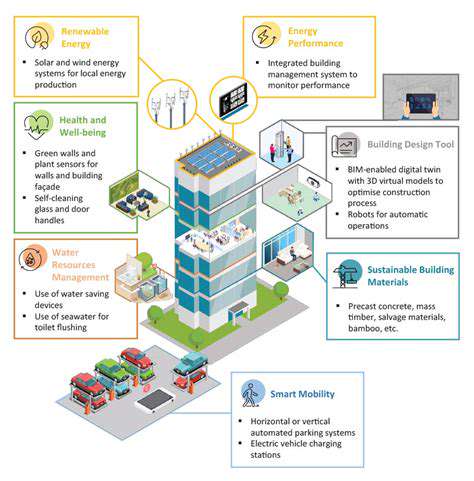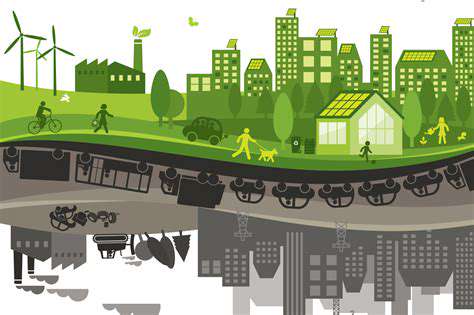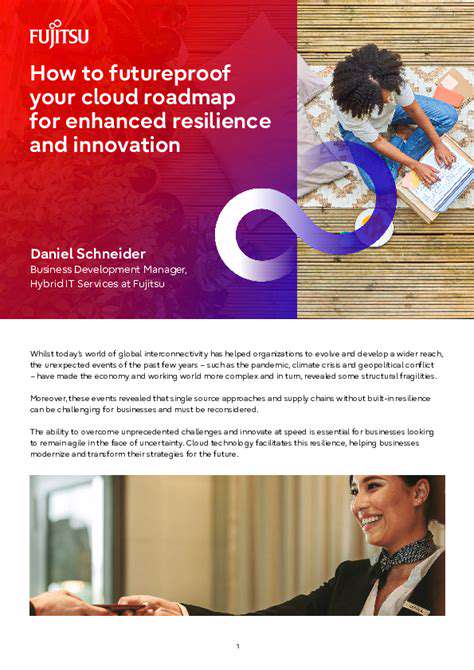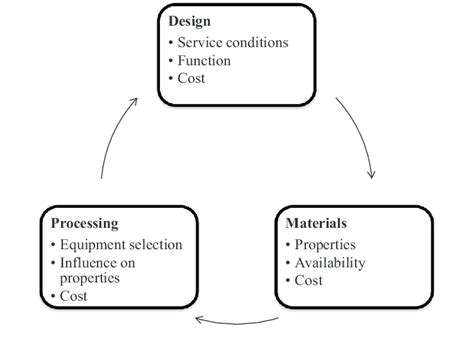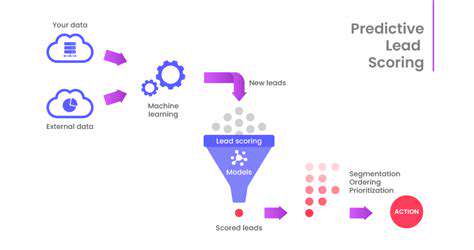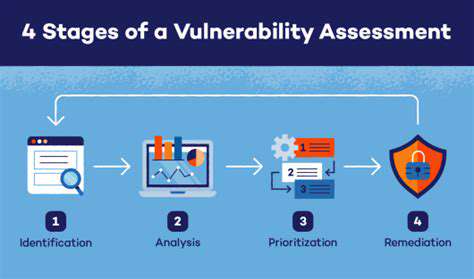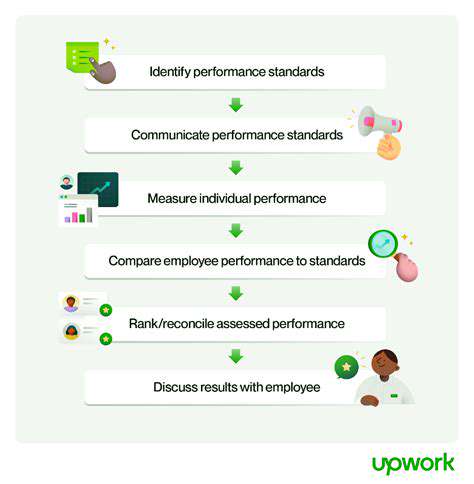Smart Buildings: The Intersection of Technology and Human Well being
Building automation systems (BAS) form the backbone of any smart building. These systems monitor and control various building functions, from lighting and temperature to security and access. Modern BASs are increasingly integrated with other building systems, enabling data-driven decision-making and predictive maintenance. This integration allows for real-time adjustments to optimize energy consumption, proactively address potential issues, and enhance the overall user experience. Sophisticated algorithms within these systems are crucial for achieving these goals.
The Impact of IoT on Building Connectivity
The Internet of Things (IoT) plays a pivotal role in creating connected spaces. Numerous devices, sensors, and actuators within a building – from lighting fixtures to HVAC units to security cameras – are connected to a network, allowing for real-time data collection and analysis. This constant flow of data empowers building managers to monitor performance, identify inefficiencies, and make informed decisions. The integration of IoT devices allows for a much more responsive and dynamic building environment, making it easier to react to changing conditions and occupant needs.
Optimizing Energy Efficiency Through Data Analysis
Smart building technology facilitates unprecedented levels of energy efficiency. The constant stream of data collected by sensors and devices allows for detailed analysis of energy consumption patterns. Building managers can identify energy-wasting areas, implement targeted solutions, and optimize energy use, often achieving substantial savings. This data-driven approach to energy management goes beyond simple adjustments, leading to a significant reduction in environmental impact and operational costs.
Enhancing Occupant Comfort and Well-being
Smart buildings strive to create comfortable and productive environments for occupants. By analyzing occupancy patterns and preferences, building systems can dynamically adjust lighting, temperature, and air quality. Personalized control options empower occupants to customize their environment, leading to increased comfort and well-being. This personalized approach to comfort goes beyond simple temperature adjustments, ensuring that the building adapts to the needs and preferences of its users.
Security and Safety Enhancements in Connected Spaces
Security and safety are paramount considerations in modern buildings. Smart building technology offers advanced security features, including access control systems, video surveillance, and intrusion detection. These systems can be integrated to create a comprehensive security network, providing real-time alerts and proactive measures to protect occupants and assets. The integration of these advanced systems not only enhances security but also promotes a safer and more secure environment for everyone within the building.
The Future of Smart Buildings: AI and Machine Learning
The future of smart buildings is inextricably linked to artificial intelligence (AI) and machine learning (ML). AI-powered systems can analyze vast amounts of building data to identify trends, predict potential issues, and optimize building performance. Machine learning algorithms can further enhance these capabilities, enabling proactive maintenance, personalized occupant experiences, and even automated responses to unforeseen events. This integration will lead to even smarter, more efficient, and responsive buildings in the years to come.
Personalized Comfort and Productivity

Tailored Experiences for Enhanced Productivity
Personalized comfort plays a crucial role in optimizing productivity. When individuals feel comfortable and supported in their work environment, they are better able to focus and maintain sustained energy throughout the workday. This translates directly into improved efficiency and a greater output of quality work. Creating a tailored workspace that caters to individual needs is paramount to success.
Understanding and incorporating individual preferences into the design of the workspace is key to achieving maximum comfort and productivity. This can range from adjusting lighting and temperature to selecting ergonomic furniture that supports optimal posture. By creating an environment that is specifically designed to meet the unique needs of each individual, businesses can foster a more productive and supportive work culture.
Ergonomic Design for Optimal Wellbeing
Ergonomic design is essential for maintaining physical wellbeing in the workplace. Implementing ergonomic principles ensures that workstations are designed to support natural body posture, reducing the strain on muscles and joints. This approach minimizes the risk of repetitive strain injuries and other physical ailments often associated with prolonged periods of sitting or repetitive tasks.
Investing in ergonomic equipment, such as adjustable chairs and desks, can significantly improve comfort and reduce the risk of discomfort and long-term health problems. Proper ergonomic design considers the diverse needs of users, promoting overall well-being and reducing the potential for workplace injuries.
Customizable Solutions for Diverse Needs
Recognizing the diverse needs of individuals in the workplace is paramount for creating a supportive and productive environment. Different individuals have varying preferences and requirements, which must be considered when designing and implementing personalized solutions. This can involve tailoring the workspace to accommodate individual needs, preferences, and physical attributes.
Offering customizable solutions allows employees to personalize their workspace to better suit their individual needs, resulting in a more enjoyable and effective work experience. This not only enhances comfort but also fosters a sense of ownership and control over the work environment, leading to increased engagement and productivity.
Prioritizing Individual Preferences for Enhanced Focus
Understanding individual preferences is crucial for optimizing focus and concentration. Individual preferences regarding lighting, temperature, and even noise levels can significantly impact cognitive function. By considering these preferences, employers can create a workplace that supports individual needs, enabling employees to concentrate effectively and maintain high levels of focus.
Implementing solutions that allow employees to tailor their workspace to their specific needs can foster a more positive and productive work environment. This can include allowing employees to choose their preferred seating arrangements, adjust lighting, or control the ambient noise levels.
The Impact of Personalized Comfort on Employee Engagement
Personalized comfort has a profound impact on employee engagement and job satisfaction. When employees feel comfortable and supported in their work environment, they are more likely to be engaged and motivated. This translates into increased productivity, improved teamwork, and a more positive overall work experience.
Creating a supportive and comfortable environment promotes a sense of belonging and fosters collaboration, resulting in a more positive and productive work environment. Investing in personalized comfort solutions ultimately benefits both the employee and the organization by increasing engagement and job satisfaction.
A key element in enhancing community involvement and empowerment is fostering a sense of ownership over local biodiversity initiatives. This involves actively engaging residents in the planning, implementation, and monitoring of projects. Empowering local communities to take stewardship of their natural resources fosters a deep understanding and appreciation for the environment, leading to long-term sustainability. This approach not only promotes biodiversity conservation but also strengthens community bonds and builds resilience.
Data-Driven Insights for Enhanced Management

Data Collection and Preparation
A crucial first step in leveraging data for insights is establishing a robust data collection strategy. This involves identifying the specific data points needed to answer your questions and choosing the appropriate methods for gathering them. Whether it's through surveys, website analytics, sensor readings, or existing databases, a well-defined process ensures accurate and reliable information. Thorough data cleaning and preparation are equally vital. This stage involves handling missing values, correcting inconsistencies, and transforming data into a usable format for analysis.
Data preparation often involves transforming raw data into a structured format suitable for analysis tools. This might include data formatting, aggregation, and merging of disparate data sources. Effective data preparation is the bedrock of any successful data-driven strategy, minimizing errors and ensuring the insights derived are accurate and actionable.
Statistical Analysis Techniques
Statistical analysis is a cornerstone of extracting meaningful insights from data. Techniques like regression analysis, correlation analysis, and hypothesis testing can uncover relationships and patterns within datasets. These methods provide a framework for understanding cause-and-effect relationships, identifying trends, and making informed predictions. For example, correlation analysis can help determine if there's a relationship between marketing spend and sales revenue.
Understanding and applying these techniques requires a good grasp of statistical concepts. Different types of statistical analysis are suited to different types of data and questions. Proper selection and implementation are critical to ensure meaningful results and avoid misleading conclusions.
Data Visualization and Interpretation
Data visualization plays a crucial role in transforming complex data into easily digestible and insightful presentations. Visual representations, such as charts and graphs, allow for a quick and intuitive understanding of data patterns and trends. Effectively communicating these insights is key to making data-driven decisions. By presenting data visually, we can identify anomalies, spot opportunities, and understand the overall story that the data is trying to tell.
Choosing the right visualization technique is essential for effective communication. For example, bar charts are suitable for comparing categories, while line charts are ideal for showing trends over time. Careful consideration should be given to the design and presentation of these visualizations to ensure clarity and impact.
Implementing Data-Driven Decisions
The ultimate goal of data analysis is to inform and drive decisions. Once insights are extracted, they must be translated into actionable strategies. This often involves creating reports, dashboards, and presentations that clearly articulate the findings and their implications. Data-driven decisions are not just about identifying patterns; they are also about implementing the appropriate actions to capitalize on those patterns.
Implementing these decisions requires a collaborative effort across different departments and stakeholders. This includes involving relevant teams in the decision-making process and ensuring that the insights are communicated effectively to influence change. Successful implementation fosters a culture of data-driven decision-making within an organization.
